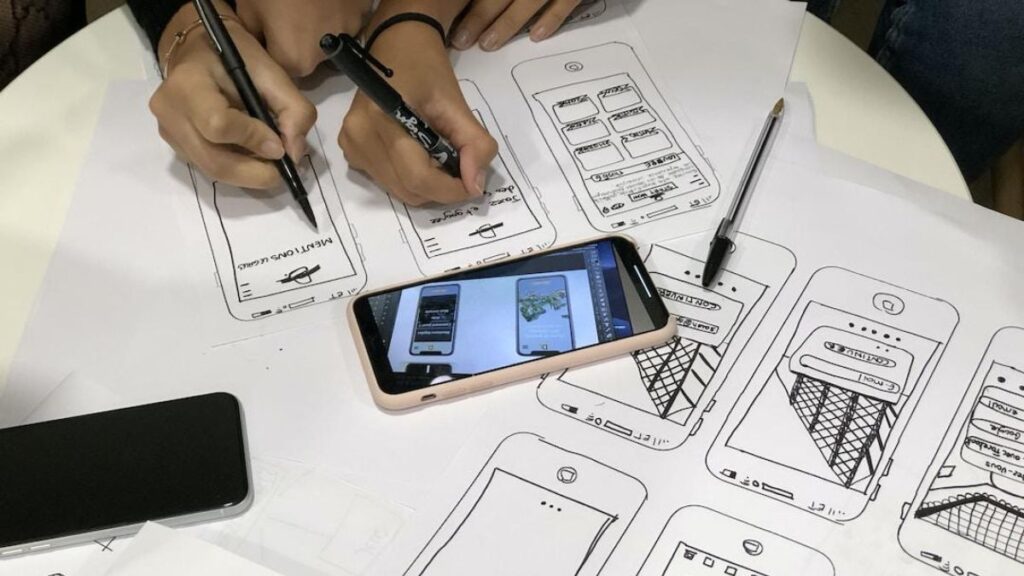Presentations play a vital role in communicating ideas, unveiling new products, pitching business proposals, and academic discourse. The effectiveness of your presentation can significantly determine the success of your objective. Therefore, it’s highly essential to stay up to date with the latest trends in presentation design. In this article, we will be highlighting eight crucial trends currently dictating the discourse in the field of presentation designers. Keep reading to familiarize yourself with these trends and incorporate them into your future presentations for maximized impact.
The Dominance of Minimalism

Knocking on the door of modern presentation design principles is the increasingly popular concept of minimalism. The idea here is quite straightforward—less is more. The core definition of minimalism revolves around simplicity, clarity, and the expression of concepts using a minimal number of elements. This approach enhances focus on the main points of the presentation, making them easier for the audience to grasp.
In recent times, the excessive use of varied elements in a presentation has been identified as a factor of distraction. A minimalist design approach strips the presentation down to its bare essentials, thus leading the viewers to the heart of the matter without the distraction of unnecessary frills. Only the most crucial points are adorned for emphasis, improving the effectiveness of the presentation vastly.
Minimalism as a design trend is not just confined to presentations. It’s widely recognized in various sectors as an exemplary design principle due to its effectiveness and elegance. By embracing minimalism, presenters ensure that their audience stays focused on the message, not the medium.
Pictures Are Worth a Thousand Words
Imagine having to explain a complex idea or theory without using any form of picture or diagram. Sounds daunting, doesn’t it? This is where the effective use of images can prove invaluable. Images have the power to convey information much more swiftly and efficiently than text. In today’s digital era where the attention span of audiences is declining gradually, the use of vivid, high-quality pictures can be an excellent strategy to retain viewer attention.
Relevant images help to break the continuous flow of text and also aid the audience to comprehend and retain the presented information. They can further trigger emotional responses, thus creating a stronger connection between the presenter and the audience. Moreover, when used creatively, images can beautifully illustrate ideas, making them more impactful.
Storytelling as a Powerful Tool
As humans, we are wired for stories. Traditional lectures or bland, information-heavy presentations often fail to create a connection with the viewer. On the other hand, a well-told story can resonate with your audience, making your presentation more memorable. Storytelling is an art, a powerful tool that can be used to drive information deep into the hearts and minds of the viewer.
Storytelling in presentations begins with a compelling narrative structure, typically consisting of a beginning, middle, and end, or set up, conflict, and resolution. Using relatable characters, vivid descriptions, and exciting twists, a presenter can tell a story that captivates the audience and keeps them hooked till the end.
A well-structured story derived from personal experiences often adds authenticity to the presentation, making the viewer more invested in the outcome. This approach strengthens the connection between the presenter and the audience, amplifying the impact of the presentation. An effective story can stimulate emotions, foster empathy, and foster a deeper understanding of the topic at hand.
Use of Data Visualization

In the age of big data, the importance of effectively utilizing and representing data has become more profound than ever. The vast amount of data available to us can feel overwhelming. Data visualization is a powerful tool that allows presenters to make sense of this data and articulate it in a digestible and visually appealing manner.
By visualizing data, presenters can simplify complex relationships, highlight trends, and expose underlying patterns that may not be immediately visible. Charts, graphs, maps, and infographics are among the most frequently used forms of data visualization. These tools, when used appropriately, can enhance the understanding of the data being presented.
Furthermore, data visualization is not limited to bar charts and pie graphs. Advanced tools such as interactive dashboards, heat maps, and 3D plots can present data in innovative and captivating ways. The ultimate goal is to transform raw, complex data into a form that is understandable, intriguing, and memorable.
Adoption of Interactive Presentations
Interactive presentations are becoming increasingly popular owing to their ability to engage the audience actively. Rather than passively consuming information, interactive presentations encourage the viewer to participate, thereby enhancing their cognitive and emotional engagement with the presented content.
Examples of interactive elements include polls, quizzes, clickable buttons, drag-and-drop elements, and live demonstrations. These components can be woven into the presentation in a way that nurtures a two-way communication channel between the presenter and the audience. As a result, the audience feels more involved in the presentation, leading to increased retention and comprehension.
Besides improving engagement levels, interactive presentations can also spur discussions and stimulate critical thinking. By involving the audience in the discourse, the presenter fosters a collaborative environment, where ideas are explored, and perspectives are shared. This level of interactivity can elevate the effectiveness of the presentation, making it a rewarding experience for both the presenter and the audience.
Integration of Video Content
With the rapid advent of technologies and high-speed internet, video content has gained immense popularity. Video content, when aptly integrated into presentations, provides a dynamic and engaging experience for the viewers. These rich media can illustrate complex concepts, showcase product demonstrations, share testimonials, or enliven narratives more effectively than conventional text or still images.
Moreover, video content can cater to diverse learning styles, thereby widening the scope of the presentation. For visual learners, videos offer a graphic representation of the content, while auditory learners benefit from the spoken word. The combined impact of visuals and sound has a stronger appeal and retention power, thus making the presentation more effective.
It’s important to note, however, that video content used in presentations must be optimized for quick loading and smooth playback to prevent disruptions. Furthermore, the video should be appropriately interspersed with other content types to maintain balance and avoid monotony. Well-executed video integration can be a valuable element in your presentation design toolkit.
Embracing Mobile-Friendly Design

In this digital era, where smartphones have become an indispensable part of our lives, it’s essential for presentations to be mobile-friendly. With the expanding use of mobile devices to access information, the demand for mobile-optimized presentations has surged significantly. Moreover, mobile-ready presentations ensure reachability and accessibility, which are crucial in today’s globalized world.
A mobile-friendly presentation is designed keeping in view the screen size of mobile devices. Cramming a standard presentation with tiny texts and intricate details into a smaller screen can cause frustration among viewers. Therefore, it’s vital to opt for clear, legible fonts, use minimal text, and focus on visual elements while designing for mobile.
Moreover, it’s crucial to consider the connectivity and hardware limitations that might impact the execution of certain interactive elements or high-quality videos in a mobile environment. Ensuring a seamless viewer experience across different devices will not only enhance the reach of your presentation but also boost viewer engagement.
Altogether, the trends in presentation design highlighted in this article point toward more effective, engaging, and visually-pleasing communication methods. By keeping your finger on the pulse of current design trends, you can equip yourself with the necessary tools and knowledge to craft a resonating, impactful, and memorable presentation. After all, a well-designed presentation is a critical instrument in conveying your ideas, inspiring your audience, and achieving your objectives.











